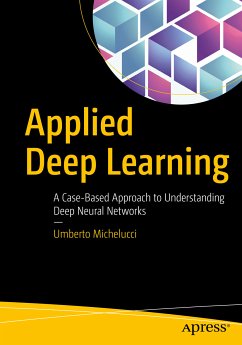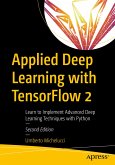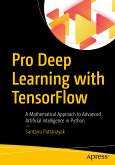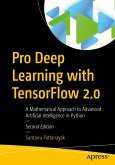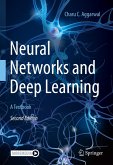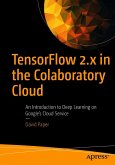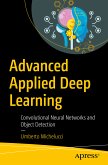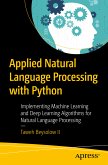Work with advanced topics in deep learning, such as optimization algorithms, hyper-parameter tuning, dropout, and error analysis as well as strategies to address typical problems encountered when training deep neural networks. You'll begin by studying the activation functions mostly with a single neuron (ReLu, sigmoid, and Swish), seeing how to perform linear and logistic regression using TensorFlow, and choosing the right cost function.
The next section talks about more complicated neural network architectures with several layers and neurons and explores the problem of random initialization of weights. An entire chapter is dedicated to a complete overview of neural network error analysis, giving examples of solving problems originating from variance, bias, overfitting, and datasets coming from different distributions.
Applied Deep Learning also discusses how to implement logistic regression completely from scratch without using any Python libraryexcept NumPy, to let you appreciate how libraries such as TensorFlow allow quick and efficient experiments. Case studies for each method are included to put into practice all theoretical information. You'll discover tips and tricks for writing optimized Python code (for example vectorizing loops with NumPy).
You will:
The next section talks about more complicated neural network architectures with several layers and neurons and explores the problem of random initialization of weights. An entire chapter is dedicated to a complete overview of neural network error analysis, giving examples of solving problems originating from variance, bias, overfitting, and datasets coming from different distributions.
Applied Deep Learning also discusses how to implement logistic regression completely from scratch without using any Python libraryexcept NumPy, to let you appreciate how libraries such as TensorFlow allow quick and efficient experiments. Case studies for each method are included to put into practice all theoretical information. You'll discover tips and tricks for writing optimized Python code (for example vectorizing loops with NumPy).
You will:
- Implement advanced techniques in the right way in Python and TensorFlow
- Debug and optimize advanced methods (such as dropout and regularization)
- Carry out error analysis (to realize if one has a bias problem, a variance problem, a data offset problem, and so on)
- Set up a machine learning project focused on deep learning on a complex dataset
Dieser Download kann aus rechtlichen Gründen nur mit Rechnungsadresse in A, B, BG, CY, CZ, D, DK, EW, E, FIN, F, GR, HR, H, IRL, I, LT, L, LR, M, NL, PL, P, R, S, SLO, SK ausgeliefert werden.
Es gelten unsere Allgemeinen Geschäftsbedingungen: www.buecher.de/agb
Impressum
www.buecher.de ist ein Internetauftritt der buecher.de internetstores GmbH
Geschäftsführung: Monica Sawhney | Roland Kölbl | Günter Hilger
Sitz der Gesellschaft: Batheyer Straße 115 - 117, 58099 Hagen
Postanschrift: Bürgermeister-Wegele-Str. 12, 86167 Augsburg
Amtsgericht Hagen HRB 13257
Steuernummer: 321/5800/1497
USt-IdNr: DE450055826
Bitte wählen Sie Ihr Anliegen aus.
Rechnungen
Retourenschein anfordern
Bestellstatus
Storno

